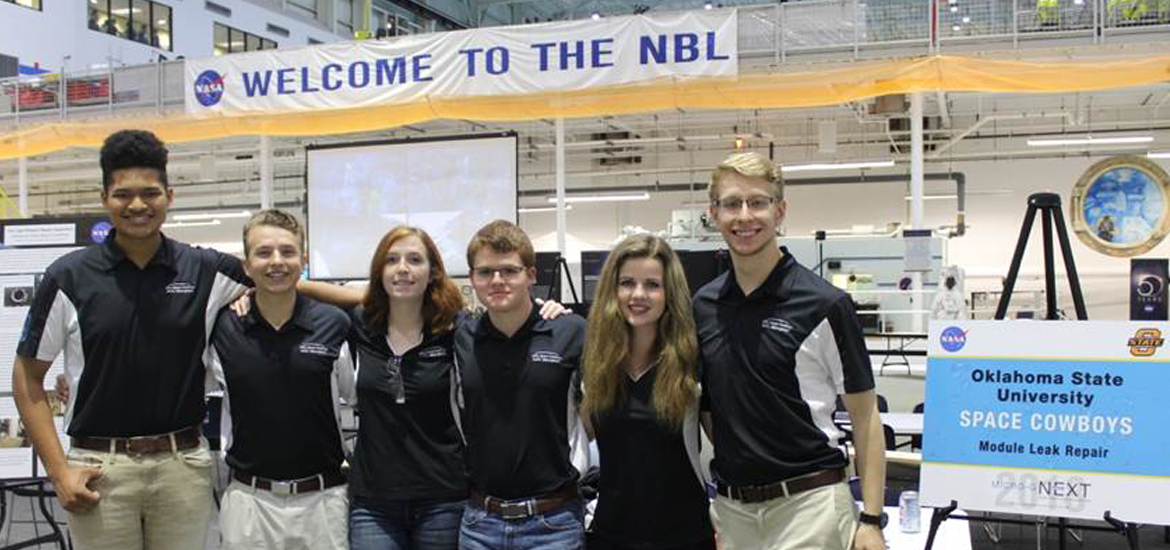
Space Cowboys at NASA Testing ISS Micrometeorite Repair System
Friday, May 25, 2018
Seven OSU undergraduate student members of the Space Cowboys team are at the NASA Johnson Space Center’s Neutral Buoyancy Laboratory in Houston to conduct experiments to test concepts for future space flight.
The OSU team, one of only a handful of university teams from across the nation selected for the project, are investigating a tool designed by the OSU students to repair holes created by micrometeorites in the International Space Station and other space habitats. These hazards cause risk to astronauts on long-duration space missions by puncturing the module skin and exposing the crew to a vacuum.
The OSU system, called Light Breach Repair Apparatus (LIBRA), is designed to repair micrometeorite damage up to one inch in diameter. Tests are conducted in the simulated microgravity environment of the Neutral Buoyancy Laboratory - the world’s largest swimming pool - where astronauts train for space walks.
OSU is participating through the Micro-g Neutral Buoyancy Experiment Design Teams (Micro-g NExT) program. The Micro-g NExT program challenges undergraduate students to design, build and test a tool or device that addresses an authentic, current space exploration problem. The overall experience includes hands-on engineering design, test operations and educational/public outreach. Since two of the OSU team members are certified divers, the team first tested their tool at OSU’s Colvin Center indoor pool before taking it to the NASA Neutral Buoyancy Laboratory.
The Space Cowboys team includes undergraduate students Alexis Vance, chemical engineering, from Overland Park, Kansas; Shawn Ray, aerospace engineering, Tulsa; Charlie Dicarlo, aerospace engineering, Manford, Oklahoma; Skyler Jacob, aerospace engineering, Stillwater; Christian Coletti, aerospace engineering, Cheyenne, Wyoming; and Garrett Wilkins, mechancial and aerospace engineering, Edmond. The student mentor is Aavron Estep, electrical and computer engineering from Tulsa, who is a previous Micro-g NExT team member and has also served as a NASA intern at the Neutral Buoyancy Laboratory. The faculty advisor is Jamey Jacob from the School of Mechanical and Aerospace Engineering. Funding is provided by the Oklahoma Space Grant Consortium.
More information can be found at www.facebook.com/ZeroGeePete
